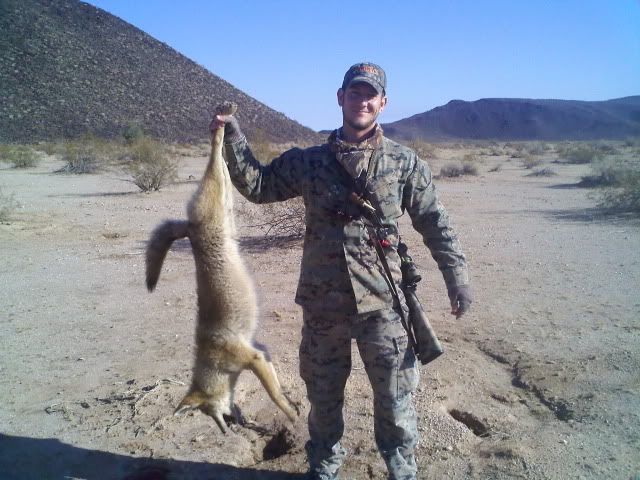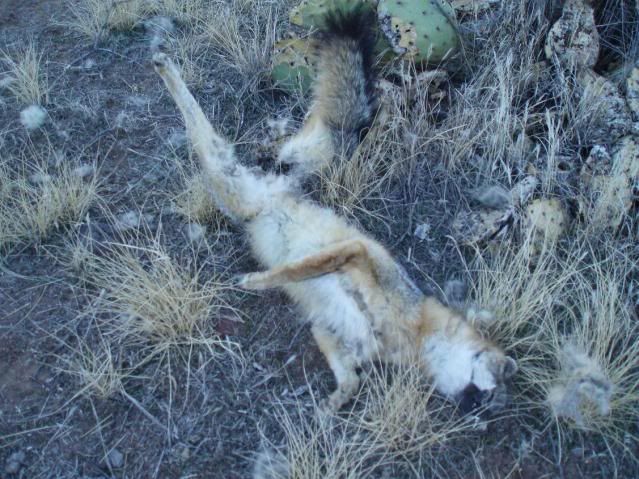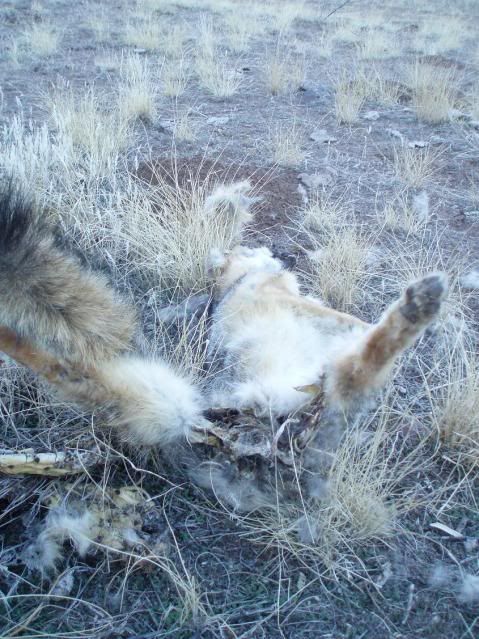I have had the opportunity to witness foxes and coyotes reacting to each other just a few times in the wild, and one of those times was today. I was out calling with a couple friends of mine and one of our stands found us between a wash and a tall, rocky hill. Just a few minutes into the stand I see a fox working its way down the hill, but about 20 feet from the bottom it stops. He's looking at something, but it's not the call. Right away he lets out a bark, then retreats up the hill, pausing every 50 yards or so to let out a warning bark and then continue his climb. Finally he gets to the top, where he is still locked on to whatever spooked him off. I'm pretty sure I know what's about to happen, but I still don't see any other predators, until a nice little male coyote pops out of the brush about 80 yards in front of me and starts to work his way to the call. He stops by a bush and I take the chance to give him a lobotomy, courtesy of a Hornady VMAX, and he hits the ground. The fox is still on top of the hill, watching the whole thing unfold, but now he's definately not interested in coming to check out the sound! But how did he see that coyote so much earlier than I did? Keen eyesight? Smell? A "foxy sense" for detecting danger? I don't know, but what I do know is that if a fox allows itself to be caught in the open by a coyote, then the coyote always promptly reminds him why foxes shouldn't let coyotes catch them in the open.
So remember: late season = hard hunting, and one of the ways to ease that up is to change your sounds, your setup, and your location. And try out some fox sounds - you'll be glad you did!
This little ol' male sure gave the fox a scare this morning - no wonder, as a large grey fox in Arizona is anything over 10lbs, while a small coyote is considered anything under 20lbs.




No comments:
Post a Comment